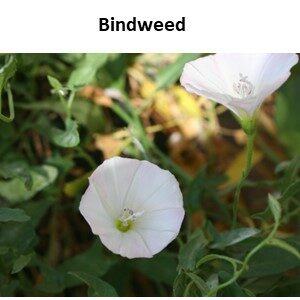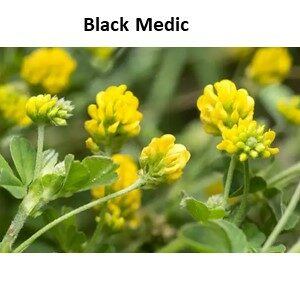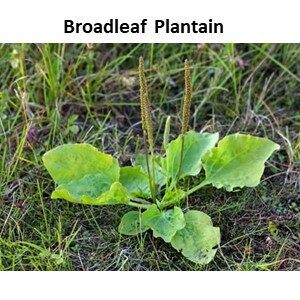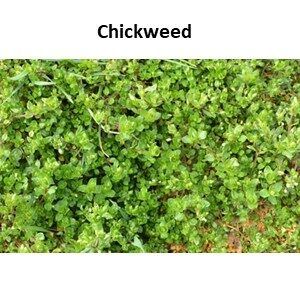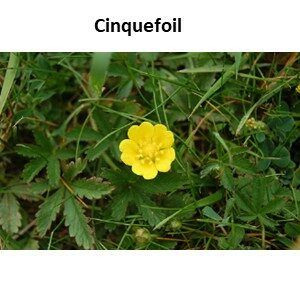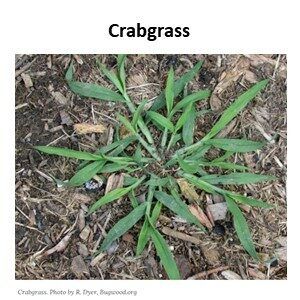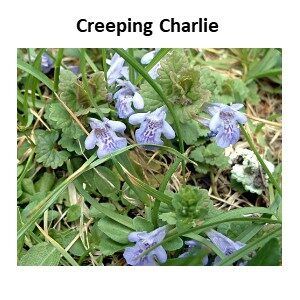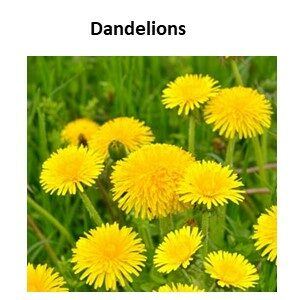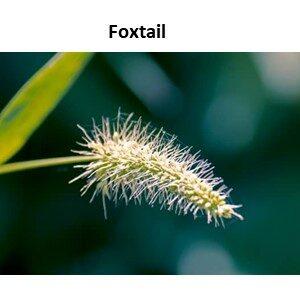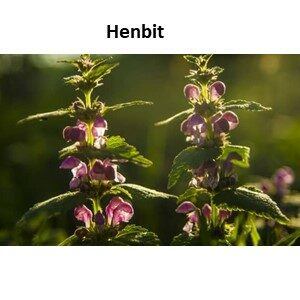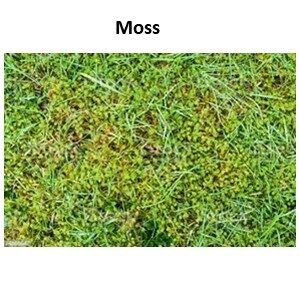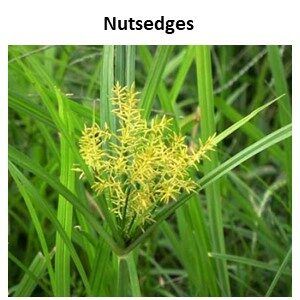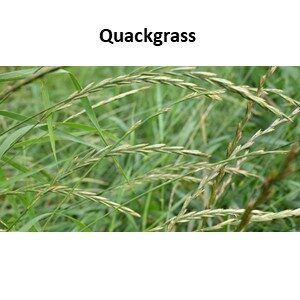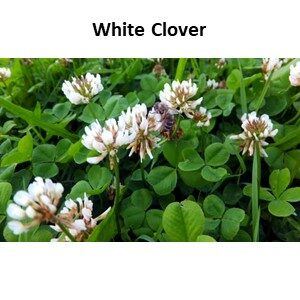Common Weeds That Attack Lawns
1) Bindweed.
2) Black Medic.
3) Broadleaf Plantain.
4) Chickweed.
5) Cinquefoil.
6) Crabgrass.
7) Creeping Charlie.
8) Dandelion.
9) Foxtail.
10) Henbit.
11) Moss.
12) Nutsedge.
13) Quackgrass.
14) White Clover.
Introduction
Common lawn weed types will describe the weeds that could attack the lawn during the mowing season and how to identify them and eradicate them from the lawn. Weeds will come up every year unless you have removed all possible roots of each weed type. They just continue to pop up year after year unless you remove their roots.
Our aim here is to help you identify the most common types of weeds you may encounter in your area. If you should see any of them, we will provide how you can remove the pesky weeds organically and non-organically from the lawn.
Most of the weeds seed during the spring months and this is a great time to look over the lawn to find any of them and how to safely remove them. Some are more difficult than others to remove.
The common weeds will be described below in alphabetical order. We also provide some solutions on how they can be removed from the lawn.
The Most Common Lawn Weeds That Can Show Up
BINDWEED
Botanical Name: Convolvulus Arvensis
Category: Perennial Broadleaf
Size: Vines grow up to 6 ft. long
This weed is a plant that snakes across the ground like a vine. You will notice arrow shaped leaves and white/pink flowers that look similar to morning glories. Bindweed can grow up to 6 feet or more in length and have deep roots.
Solution 1: Organic
- If you notice Bindweed, cut if off at the soil level. Do not try to pull it out as it will re-sprout from the roots. With continued cutting it off at the soil level, will prevent Bindweed from experiencing photosynthesis and will starve to death.
- You can pour boiling water on the Bindweed as boiling water kills all plants. If you use this method, you must re-seed the treated area.
Solution 2: Non-Organic
- Use an herbicide containing glysophate and spot spray in the early spring or early fall. This spray will kill turf and you will need to re-seed the treated area.
BLACK MEDIC
Botanical name: Medicago Iupulina
Category: Annual Broadleaf
Size: 1 – 2 ft. in length
This weed is also known as Yellow Trefoil or Yellow Clover and is an annual species. This weed only lives one year but it makes lots of seeds that can remain viable for years. The seeds germinate in the spring and can grow in drought-prone soils. This weed can tolerate low mowing heights. Keep the grass at 3 inches or higher to spoil its growth.
Solution 1: Organic
- Developing a thick, dense turfgrass canopy improves the competition against it. Keep lawn 3 inches or higher is a good preventive measure against this weed.
- Hand pulling is the only option in removing this weed before it starts to make seeds.
- Another option is using a vinegar based or critic acid organic herbicide.
Solution 2: Non-Organic
- Try using a broadleafed weed killer that contains 2-4-D, dicamba and MCPP/MCPA for best results.
- Contact your local garden center store for the best options in your area.
BROADLEAF PLANTAIN
Botanical Name: Plantago Major
Category: Perennial Broadleaf
Size: 4-16 inches high
This is a perennial weed tolerates a wide variety of growing conditions like dry soil, wet soil, heavy clay soil, and low mowing heights. If left untreated, plantain can grow as much as 12 inches across and 2 feet high.
Solution 1: Organic
- Hand weeding is very effective. Remove as much of the root system as possible. To make this step easier, moisten the soil before trying to pull it out as does have a deep tap root. Note: This step may be repeated throughout the summer.
Solution 2: Non-Organic
- Using a non-selective herbicide that contains glyphosate (Round-Up) just spot spray in the early spring or early fall. This application also kills the turf. You will need to re-seed the treated area.
CHICKWEED
Botanical name: Stellaria media
Category: Annual broadleaf
Size: Up to 18 inches tall
This weed is noticeable during the winter months. This weed spreads quickly by forming a dense mat as its shoot intertwine in damp soil. This weed as it grows spreads up to 16 inches in diameter. It thrives in shady, wet areas and will grow in a range of conditions. The plants can produce up to 1300 seeds each and spread easily across the lawn if left untreated and thrive for years.
Solution 1: Organic
- To control this weed you will need to do a combination of hand weeding, mulching and soil cultivation.
- The best time to do this is in early spring when the plants are first emerging to hand weed them. You must get all the roots otherwise, they will grow again into a new plant. Once the area is cleared of Chickweed, the soil can be turned over. This action will bury the seeds on the surface down under the soil to prevent germination. This won’t get rid of this weed but will slow it down.
- Maintain a thick healthy lawn by feeding 4 times a year – 2 times in the spring and 2 times in the fall.
- Pull up as much foliage as you can by hand. Then mow that area at a lower height to allow grass around it to recover.
Solution 2: Non-Organic
- Use a product like Scotts Turf Builder Weed & Feed to take care of these weeds. Another product Scotts Turf Builder Triple Action.
- Glyphosate can be effective on Chickweed. Contact your local garden center for the best options to use in your area.
CINQUEFOIL
Botanical name: Potentilla Fruticosa
Category: Perennial Bush
Size: Up to 3 inches to 4 ft. tall
This is a creeping weed that spreads with stems that take root at intervals as it moves as blooms in the spring to fall. The leaves resemble those of a wild strawberry with each leaf having five toothed leaflets. You will notice it has five flowers with heart shaped petals.
Solution 1: Organic
- Hand weeding is very effective. Watering the area a day or two ahead makes this a lot easier. Plant will regrow if you fail to remove all the taproot.
- Raking the lawn prior to mowing will help weaken and discourage it.
Solution 2: Non-Organic
- If you choose to use chemical controls you will need repeated applications to remove this weed. Ask the garden center for the best options to use in your area. You may have to re-seed the treated area.
CRABGRASS
Botanical name: Digitaria sanguinalis
Category: Perennial Grass
Size: Up to 1 to 3 ft.
This weed is a warm annual weed that invades lawns that are thin, weak and undernourished. The seeds germinate in late spring when temperatures reach 55 F (12 C). This type is a ground-hugging weed that spreads over surrounding grass. One plant of this weed produces 150,000 seeds throughout the summer and will sprout the following year. The crabgrass seeds do remain in the soil for many years. If you live in the north, this plant will die out due to the harsh cold weather. In the south, this weed could survive year-round.
Solution 1: Organic
- The best defense for this weed is over seeding the lawn will produce dense roots that will not provide space for Crabgrass to grow. If you have a thick and healthy lawn that is mowed to a height of 3 inches, Crabgrass will be rare. This helps to keep the soil cooler which inhibits germination of Crabgrass seeds.
- If you saw Crabgrass in the past, early in the spring give the area a hard raking to detach it and remove the debris. You can apply corn meal gluten that acts as an organic pre-emergent herbicide. Note: Since corn meal gluten is a pre-emergent, you cannot overseed the lawn until the fall if you used corn mean gluten in the spring.
- To organically control Crabgrass is to keep your lawn mowed in late summer when the Crabgrass is putting up its purple seed stalks preventing it from making seed for the future.
Solution 2: Non-Organic
- By the time Crabgrass is noticeable it may be too late to treat the lawn.
- You can get chemical Crabgrass treatments. Just contact your local garden store for the best options to use in your area.
CREEPING CHARLIE
Botanical name: Glechoma hederacea
Category: Perennial broadleaf
Size: 1-4 inches tall and several feet wide
This weed is very aggressive and difficult to control when it’s established in lawns. This is also known as ground ivy as it grows close to the ground. They like growing in moist areas. You recognize this weed with its low growing creeping stems that form new plants. It has violet-blue colored flowers and likes to grow in shady areas.
Solution 1: Organic
- Removing of this weed is by hard pulling or hard raking repeatedly will prevent Creeping Charlie from photosynthesis that will exhaust its stored energy supply. If the ground is hard or dry, water the area first to make pulling by hand easier.
- You can use borax to selectively control Creeping Charlie in turf. Dissolve 1 ounce of borax in 2-3 gallons of water and apply the solution uniformly over each 1000 square feet area. If you have small infestations of Creeping Charlie dissolve 5 teaspoons of borax into one quart of water. This covers 25 square feet. Do not re-apply the borax solution more than once a year. It contains boron which is toxic to your lawn.
- You can smother Creeping Charlie infestation by blocking the sunlight with a barrier of newspaper, tarp, or cardboard for a week. Use a weight like rocks or bricks to hold the tarp or newspapers in place. After a week, take a look to see if its brown or shriveled. If yes, your done. If not, wait another week.
Solution 2: Non-Organic
- Try using a broadleafed weed killer that contains 2-4-D, dicamba, tricolpyr and MCPP/MCPA or a combination for best results. Follow manufacturer’s instructions for applying it.
- Contact your local garden center store for the best options to use in your area.
DANDELION
Botanical Name: Taraxacum officinale
Category: Perennial broadleaf
Size: 2-18 inches
You notice these pesky weeds every spring when it’s time to cut the lawn for the first time. As you know, their seeds float through the air just looking for the slightest opening in the lawn to propagate. Below ground they have a taproot up to 10” long. You must remove the entire taproot and if any piece of it remains in the ground it will re-grow the following spring.
Solution 1: Organic
- The best option here is to overseed the lawn that will encourage a dense root system which will not leave any space for Dandelions to grow.
- Mulching is a great option to prevent Dandelion seeds from germinating.
- Next option, is to remove them by hand. You must remove as much of the root system as possible.
- A final option is to use boiling water. Just pour boiling water on Dandelions as boiling water kills any and all plants. If you choose this method, you need to re-seed the treated areas.
Solution 2: Non-Organic
- You can use a broadleafed herbicide that has an active ingredient 2-4-D. The best time to use herbicides on Dandelions is in early fall. This is when the leaves are transferring the nutrients down to the roots. The herbicide will be absorbed by the leaves and is passed down to the roots.
- Ortho WeedClear or Scotts Turf Builder are good options.
- Contact the local garden center for the best options to use in your area.
FOXTAIL
Botanical name: Alopecurus
Category: Annual grassy weed
Size: 1-3 ft. tall
The Foxtail weeds have long fluffy seed heads sitting at the end of grass-like stalks. Which makes them look like a fox’s tail. This weed can grow in dry or wet conditions. This weed is very prevalent in North America. This weed seeks out the weakest spot of the lawn.
Solution 1: Organic
- The best way in preventing Foxtail is to keep your lawn in good health with a thick lawn and keeping the grass at the proper height for your grass type.
Solution 2: Non-Organic
- You can use a herbicide in the spring that is effective against crabgrass. Check the label to be sure.
- If you have a heavy infestation of Foxtail, you can use Roundup for Lawns to kill them. Use this when the weed is small and the heads have not developed seeds yet.
- Contact your local garden center for the best options to use in your area.
HENBIT
Botanical name: Lamium amplexicaule
Category: Annual broadleaf
Size: Up to 12 inches tall
This weed is recognizable with purple flowers, square stems, and scallop-edged leaves. It is native to Europe, Asia, and Northern Africa. The leaves grow opposite each other and have prominent veins on the lower surface. This weed is spread by seeds and to control it before it gets a chance to disperse them.
Solution 1: Organic
- The best way to control this weed is to have a healthy dense lawn.
- For sparse areas, reseed open areas of the lawn. Apply a mixture of fertilizer and seed to fill in those open areas.
- Raise the lawn mower blade. Be sure to mow the grass at the proper height for the grass type.
Solution 2: Non-Organic
- Use a herbicide that contains 2-4-D Amine will work well in treating this weed.
MOSS
This weed does not have roots. Instead they have rhizoids, which are small hair like structures. Their main function is anchoring the plant to rock, bark or soil. This weed is typically seen in shady, damp acidic soils, as moss spreads through its spores. This weed soaks up rainfall, maintain moisture in the soil below and keep conditions around them humid.
Solution 1: Organic
- To permanently remove moss begin by raking the area with a hard rake to loosen it. Use the edge of a flat shovel to scrape away the moss and remove the debris. Then, top dress the area with compost and seed it with your favorite lawn seed. Loosen the soil to a depth of 3 inches and regrade to allow drainage before seeding.
- You can make a spray consisting of 4 ounces of dish soap to one gallon of water and drench the moss with the solution. The moss will turn orange/brown in 24 hours and dry up.
- For smaller areas you can make a spray consisting of 2 tablespoons of dish soap to 1 quart of warm water. Then spray the moss area with the solution.
- Continue spraying daily until the moss turns yellow and dies.
- Rake the moss from the area and discard it.
- You may have to re-seed the treated area.
Solution 2: Non-Organic
- Go to your local garden store and ask for the best herbicide option in removing moss in your area. You may have to reseed the treated area after applying the application.
NUTSEDGE
Botanical Name: Cyperus Rotundus
Category: Perennial Sedge
Size: Yellow Nutsedge up to 3 ft. tall. Purple Nutsedge up to 1-13 ft. tall.
This weed is also known as Nut Grass. This wide-bladed bright green sedge grows very quickly. Each blade has a thick mid-vein and a waxy coating. Its root system is shallow and may produce many nut-like tubers which is underground food storage for the plant. The tuber has up to seven viable buds and each can grow and produce new plants.
Solution 1: Organic
- The best way to get rid of nut grass is by removing the entire plant, roots and all by digging it out by hand. See below.
- Another option is to coat the grass in sugar as an organic alternative. See below.
Removing by Hand
- Insert the gardening trowel directly next to the nut grass. Dig down as far as you can go. Nutsedge has root systems that extend as deep as 12 to 18 inches below the surface.
- Gently pry the plant, roots and all, from the ground. Do this gently to reduce the number of roots that may break off and pieces the roots break into. Dig out stray roots. If any remain, there is a chance they can return.
- Place the weeds into a garbage bag, along with the soil you dug out simultaneously.
- Dispose of the weeds in the trash. Do not place them into a compost pile as you may be spreading Nut Grass into another area of your lawn.
Using Sugar
- It’s best to use this method at the start of the growing season when nutsedge is barely beginning to germinate and sprout. Begin by watering the lawn. Do not soak it but it should be evenly moist down to the soil.
- Place the sugar in a sifter and sift sugar over the lawn. Walk up and down the lawn in straight lines at a steady pace.
- Pour the sugar through a sifter as you walk, continually turning the handle of the sifter. Be sure the sugar falls on the grass in even amounts.
- Water the lawn again. Don’t saturate the grass as it would was the sugar away.
- Spray the lawn with a light mist that will coax the sugar down into the soil and the roots of the lawn.
- Repeat this procedure twice more through the spring. The nutsedge may not die off completely after the first treatment but after a few applications of sugar, they will be dead.
Solution 2: Non-Organic
- Use a herbicide that contains MSMA or a products with a chemical called bentazon. For best results, use the herbicide before the nutsedge has five true leaves. Use the herbicide early in the season while the nutsedge is still young and has minimal leaves.
- Before application, allow the lawn to grow a couple of days and then apply the herbicide. Also, you need to apply the chemical during a dry period. If you have watered the lawn, wait a couple of days before applying the application. If heavy rains are expected, wait, otherwise the water will wash the chemical away and not have a chance to do its job. Note: Read the instructions on the herbicide package to properly apply the applications.
QUACKGRASS
Botanical Name: Elymus Repens
Category: Perennial grassy weed
Size: Grows up to 4 ft. tall
This weed is native to Europe, and Quackgrass is easy to identify. It has a long wide-leafed grass and the blades have a rough almost burr-like feel to them. The roots form deep, dense mats and these roots tend to break when pulled leaving pieces in the soil. Any left in the ground will quickly re-grow into new plants causing this issue again next year.
Solution 1: Organic
- Regular overseeding of the lawn will encourage a dense root system which will not provide space for Quackgrass to grow.
- If the area is small you can dig it up, but be sure to get all the roots.
- Mowing frequently is a good way to control Quackgrass from making seeds for the future. Set the mowers height at 3 inches.
- Another method is to apply Corn Meal Gluten in the early spring as it acts as a pre-emergent herbicide. When using this method you cannot overseed the lawn until fall.
- The last option is to pour boiling water on Quackgrass as boiling water kills all plants. If you use this option, you must re-seed the treated area.
Solution 2: Non-Organic
- Make a herbicide solution containing the following:
- 1 Gallon of white vinegar
- 1 Cup of Epsom salt
- 1 Tablespoon of dish soap
- Spray bottle for small infested areas
- Garden sprayer for larger infested areas
- Works best when applying the application during the sunniest time of the day with little or no breeze.
- Check the treated area in a couple of days. If the plants are not dead, reapply the herbicide solution.
- When weeds are dead, pull the dead weeds and sow grass seed in the bare spots to encourage healthy lawn growth.
WHITE CLOVER
Botanical name: Trifolium repens
Category: Perennial broadleaf
Size: 6-12 inches tall
This weed is also known as Dutch Clover. It’s a perennial that is native to Europe and Asia. It forms creeping stems (stolons) that produce roots and shoots along the stem. It is part of the legume family and will fix nitrogen into the soil which enables it to thrive in unfertilized areas.
Solution 1: Organic
- Apply Corn Meal Gluten in the early spring which will stop new White Clover seeds from germinating. If you use this method you cannot overseed the lawn until the fall.
- Pulling out the weeds by hand. It is best to do this after a rainfall or after the lawn was watered deeply. A moist soil makes them easier to remove.
Solution 2: Non-Organic
- Any commercial broadleafed weed killer will do the job on this weed.
- Ask the garden center for the best options to use in your area.
Conclusion
Now that you are aware of some of the most common weeds found on lawns, you can take corrective action against them when they attack your lawn.
You know what each weed looks like so you can identify it if it should appear on your lawn. We have provided an organic and a non-organic methods to use against them.
The best preventive measure you can take against most of the weeds in this list is to ensure that the height of your grass is 3 inches as some weeds have difficulty in growing when grass is high. Also, a healthy and dense lawn is another way to keep the weeds from attacking.
Another preventive measure you can take is to overseed the lawn in the fall which also helps keeping the weeds at bay out of your lawn.
It is very important when removing any of the weeds by hand, to get all of the roots. As these weed roots can re-grow back again in the spring.
If you do use a chemical herbicide to remove a large infestation, be sure to re-seed the treated area.
Shop Weed Remover
You can shop for weed killer to remove those pesky weeds by clicking on an image. You will be taken to Amazon where you can place the order. You also can read the reviews and answered questions before purchasing.
As an Amazon associate, I earn from qualified purchases.

